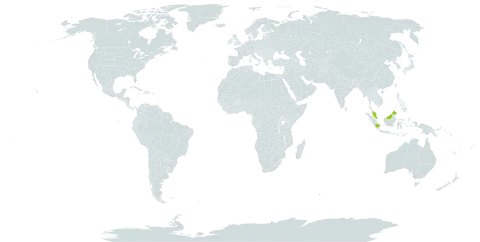Shrub or small tree, c. 3 m; branchlets terete, glabrous, but somewhat angular and dark-brown velvety at the innovations. Leaves oblong or oblong-elliptic, long (1½-2½ cm) and sharply acuminate at the apex, rounded or broadly cuneate, rarely subcordate at the base, ± equilateral, subcoriaceous or firmly chartaceous, pellucid-punctate and-striate, dark-brown and dull above when dry, paler beneath, glabrous above, soft yellowish-brownish tomentose over the whole undersurface, more densely so on midrib and nerves, distinctly and rather regularly sinuate-denticulate (teeth +-protracted towards the leaf-apex, ± 1 mm high, 4-6 mm spaced, with a distinct little gland underneath), 15-25(-30) by (5-)7-10(-13) cm; midrib slightly impressed above, very prominent beneath, nerves 7-10(-13) pairs, ascending, flat or somewhat impressed above, prominent beneath, veins slightly reticulate and little prominent specially above; petiole tomentose 4-8(-12) mm. Stipules subulate, first dark brown-velvety, later glabrescent, 5-7 by 1 mm. Flowers pale green, several (rarely 1-2 only) from each axil. Bracts ovate, membranous, rather densely pubescent, 2 mm. Calyx yellowish-grey-sericeous in-and outside, in all 2.5 mm long, deeply 5-lobed. Stamens 10(-12), equal in length; filaments glabrous, 1 mm. Staminodes triangular-obtuse, 0.5 mm, barbellate at the apex. Ovary broadly conical, ± densely pubescent. Fruit orange, elliptic, laxly pubescent, ± 2.5 by l.25 cm; peduncle c. 5 mm.
